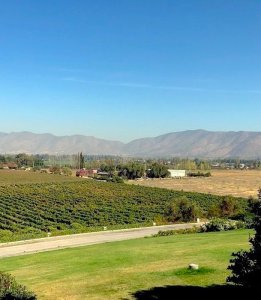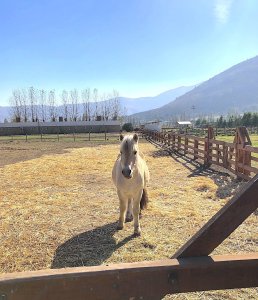What is Natural Wine vs Biodynamic vs Organic Wine?
- Stephanie
- Jan 15, 2020
- 5 min read
Updated: May 19, 2020

You’ve no doubt heard the buzz around Natural Wine maybe even Biodynamic Wine or Organic Wine. With overall trends toward eating organic, freshly prepared foods, it’s no wonder consumers want a healthy approach to the wine they drink. But what does Natural, Biodynamic, and Organic mean when it comes to wine? Let’s take a closer look.
Natural Wine
To make Natural Wine, producers follow a minimal intervention approach to winemaking. This means they don’t add lab-grown yeast, sulfites, sugar, acidity, and they skip the oak barrels. It also means they don’t filter out impurities such as proteins or microbes.
At the same time, some wineries add small amounts of sulfites which helps to stabilize the wine. However, the amount of sulfites added is significantly less compared to conventional wines.
Since natural wine is unfiltered, it will be cloudy. It’s known for its funky, sour taste and barnyard aromas.
Currently, there is no legal definition or regulation for Natural Wine and any producer can claim this on their wine label.
Biodynamic Wine
Biodynamic means there are no synthetic fertilizers or pesticides used. Only natural fertilizers such as plant compounds mixed with rainwater are used. The vineyard is treated as an entire ecosystem with local plants growing right alongside the vines. These vineyards look wild and alive compared to the pristine clean-cut vineyards where stray plants are quickly removed or suppressed. The key factor of a biodynamic winery is the influence of astrology and lunar cycles used to determine when to plow, treat, and harvest the grapes. And even when to open a bottle.
During winemaking, the only requirement is to use wild yeast that’s in the air (not lab produced) and to refrain from making acidity adjustments. This doesn’t go as far as the practices just described for Natural Wine.
Biodynamic practices are not regulated. However, there are Biodynamic certifications available through a third-party. These certifications are expensive and many small wine producers who follow these practices don’t spend the money to obtain the certification. This ends up making it harder to know who’s truly following these practices.
On a side note, my husband and I visited a small, biodynamic winery owned by a shipping magnate. We thought this was fitting because running a biodynamic winery can be expensive and passing the costs along to your customers may just price you out of the market. It was apparent this owner ran this winery as a serious hobby, but likely at a loss.
He also had these beautiful Norwegian horses on the grounds. The winery representative explained that cow horns are packed with the horse manure and planted among the vines. A natural way to fertilize.
It was a beautiful place and their wines were spectacular. Here are a couple of pictures to enjoy.
Organic Wine
The practices for Organic Wine are similar to Biodynamic minus the astrology element. They do not use synthetic fertilizers, pesticides, or herbicides in the vineyard. And to earn the USDA organic seal, wines must not have any added sulfites. Conventional wines use sulfites to help preserve and stabilize the wine.
Keep in mind the US and EU have different requirements for organic certification. But to label wine as organic, producers must follow strict laws.
Sustainability Practices
You get a bonus term! This is another term that’s tossed around with the three we just discussed. Sustainability applies to practices that are ecological, economical, and socially responsible. Wineries focusing on sustainable practices incorporate energy and water conservation practices along with using renewable resources.
Sustainability certifications are available through third-parties.
Try These Wines For Yourself
Interested in trying any of these wines for yourself? Here are some great options.
Affiliate links are included for your convenience. If you click on a link and make a purchase, Common Grape earns a small amount. Your cost is the same with or without the link. Enjoy!
To explore the combined category of organic, biodynamic, sustainable wine visit Wine.com: Wine.com – Sustainable Wines
This overarching category on wine.com doesn't further specify organic vs biodynamic, etc. So, I've listed a few selections by specialty below.

Natural

Can Sumoi 2018 Xarel-lo – White Wine Penedes, Spain Rating: RP 92
Biodynamic
King Estate Willamette Valley Pinot Noir 2017 – Red Wine, $29 Willamette Valley, Oregon
This one is biodynamic, organic and sustainable.
Odfjell 2017 Armador Cabernet Sauvignon – Red Wine, $13 Casablanca Valley, Chile
Tablas Creek Patelin de Tablas Rosé 2018, $25 Paso Robles, Central Coast, California Rating: WE 93
Organic
Loveblock 2019 Sauvignon Blanc – White Wine, $22 Marlborough, New Zealand Rating: WS 90
Winemaker Kim Crawford and his wife are founders of Loveblock. They are no longer involved with their famous, namesake winery Kim Crawford. Check out the video of Kim on their website (scroll to the bottom). He seems like just a regular guy. So cool!
Frog’s Leap 2018 Napa Valley Sauvignon Blanc – White Wine, $27 Napa Valley, California Rating: WW 92
Sustainable
Sauvignon Blanc – White Wine, $22 Martinborough, New Zealand Rating: WW 93
Parducci 2016 True Grit Reserve Cabernet Sauvignon – Red Wine, $30 Mendocino, CA Rating: TP 91
Rodney Strong 2016 Estate Pinot Noir – Red Wine, $25 Russian River, Sonoma County, California Rating: WS 91 A familiar name in wine. This winery is dedicated to sustainable farming practices.
Purchasing options:
Wine.com: I am an affiliate, and the more I use wine.com the more I love it. So, I’m partial to their offering, services, and fantastic information about wine. It’s easy to filter and find what you want based on grape, price, bottle size, and even on this “green” category.
Local retailers: More of these specialty retailers are cropping up that focus on these types of wine. Your everyday wine shop is likely to carry these types of wine as well. Just ask! 🙂
Primalwine: This online retailer focuses on all of the types of wine we discussed in this post. They’ve got a great website to help you filter to the category of wine you are interested in. I am not an affiliate, but this is a great option for exploring these unconventional wines because you can confidently select a wine that follows the practices that interest you.
Summary
These unconventional wine practices have actually been used for centuries. It’s our modern, conventional wine practices that have been developed most recently. So, go back to our winemaking roots and try these “unconventional” wines. Here is a recap:
Natural wine is about minimal intervention in the winemaking process by striving not to add or remove anything during the process.
Biodynamic wine does not use synthetic fertilizers or pesticides in the vineyard and follows astrology and lunar cycles for the best times to take action in the vineyard. During winemaking, wild yeast is used and no acidity adjustments are made.
Organic wine does not use synthetic fertilizers or pesticides. No sulfites are added.
Sustainable practices incorporate energy and water conservation along with using renewable resources.














.png)
Comments